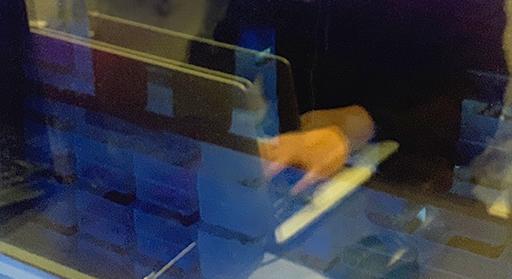
TXCS wants students to consider the ways in which the laws are evolving to adapt to massive tech growth as well as examine the further ethical implications of their work.
There is a certain “grow fast or die slow” paradigm in the present-day computing industry. Software and technological innovations are in a period of massive growth and flux—change is so rapid that even today’s laws are lagging behind.
Texas Computer Science and Texas Law professors argue that under current circumstances, it is also important to consider the ways in which the legal field is evolving to adapt to these technological changes as well as examine the further ethical implications of computing.
Legal protection for software currently lies in a growing area somewhere between patent and copyright law—subcategories under the umbrella of intellectual property—a field that deals with the legal rights and authorship of creative works and inventions.
However, patent law is currently more focused on tangible and hardware-based creations. For example, machinery, robots, and internet of things devices—rather than the more conceptual algorithms or abstractions often associated with software programs.
Furthermore, a patent in the US protects a creation for 20 years after its initial filing date, but it can take two to three years for a patent application to be approved. With the speed that new applications and programs develop, a patent would not issue for software or algorithms until well after it is no longer applicable.
Karen Landolt, J.D. Assistant Professor of Instruction in Computer Science and Business, Government, & Society, said, “Just try to think of a program that has been around for 20 years. These are extremely rare. Different versions [of programs] come out even in a two or three year period. The same goes for various operating systems too”.
Copyright law is increasingly the best area of law to protect software and, according to Landolt, it is beneficial for programmers and engineers to be aware of these changes. Technology and law are more closely linked than most think and these areas need to cooperate for optimal development.
Aside from inventors and creators, the rise of complex software systems also leads to legal challenges for users. For example, in regard to artificial intelligence systems in self-driving cars, the US Department of Transportation wrote that the government would interpret artificial intelligence in a self-driving car as a valid and legal “driver”. In this respect, interesting questions like “What laws should be in-place to protect users of these technology products?”, “What regulations should be placed upon them?”, and “What are the rights of users?” arise.
Regardless, laws and legal regulations are just general guidelines—they do not resolve the broader, and perhaps more fundamental, ethical questions. “Just because something is legal doesn’t mean it’s ethical,” said Landolt.
At TXCS, students are increasingly being challenged to go beyond coding and engineering. The department wants to help them develop a core understanding of ethics as well.
“We have to understand the pervasive effects of technology and think critically about what we’re doing,” said TXCS Professor Alison Norman.
Norman currently teaches a course called “Ethical Foundations of Computer Science,” which introduces first-year students to real-world ethical dilemmas and how to approach them. She hopes that this will allow students to draw parallels to problems they may encounter working in technology and find principled and constructive ways to go about solving them.
“It’s not that most people are unethical”, said Norman, “It’s more that people haven’t thought about ethics deeply or found they even have the right to care”. With these types of courses, students have practice thinking about these things.
The department is now considering adding ethical case studies to the curriculum of various required computing courses. “The goal is to create different scenarios and to be intentional about hitting all areas” said Norman, regarding the importance of ethics in the context of a computer science education.
While Norman has proposed to integrate ethics directly into the computer science curriculum at UT, Landolt hopes to educate more indirectly, merging service and experiential learning into her teaching. In her “Behavior Ethics in the Digital Age” course for TXCS undergraduates, students collaborate with nonprofits to create technology solutions for real-world challenges. “My hope is to teach them to be ethical decision-makers,” she said.
In the end, it just benefits everyone when people are informed and intentional about what they’re doing regardless of their field, both legally and ethically. In the meantime, TXCS is actively working towards this—helping to educate and shape the next generation of conscientious inventors and programmers alike.



